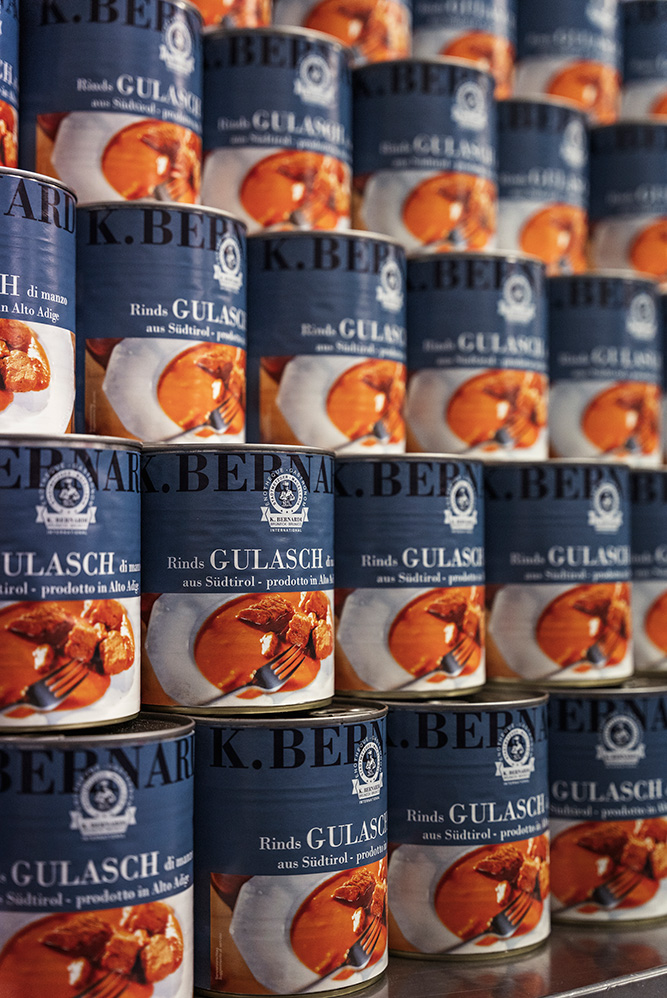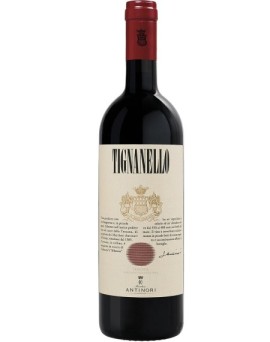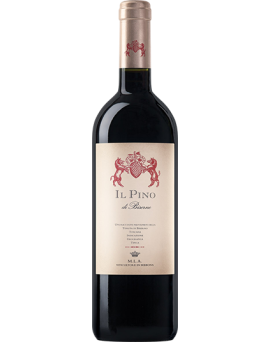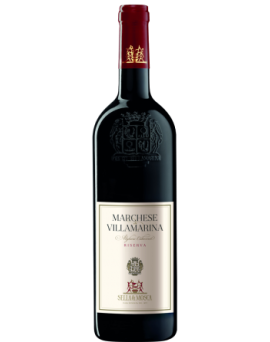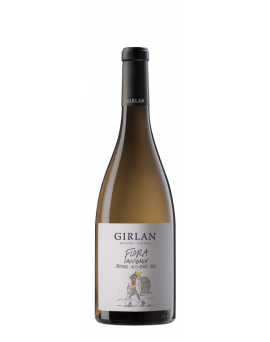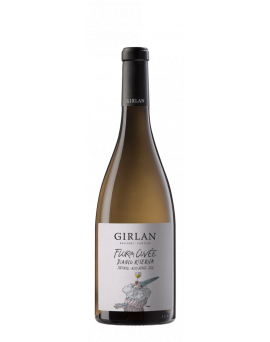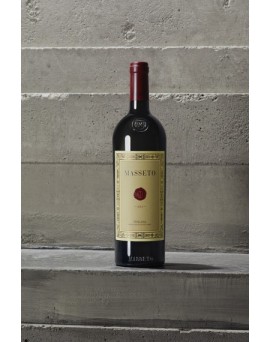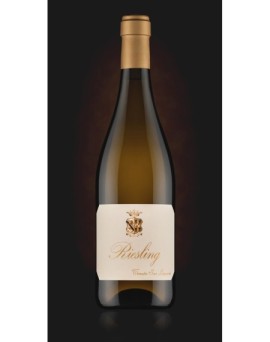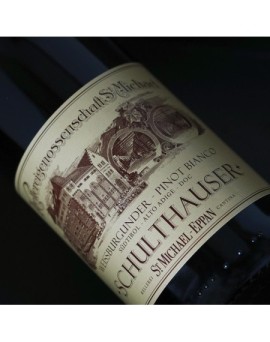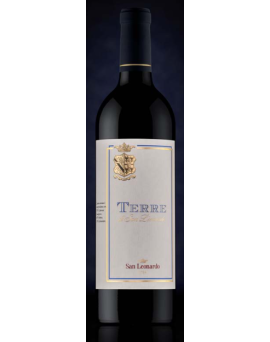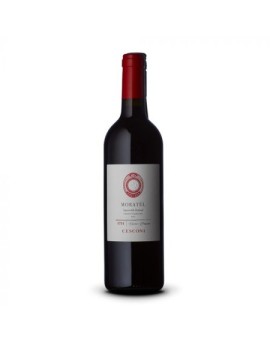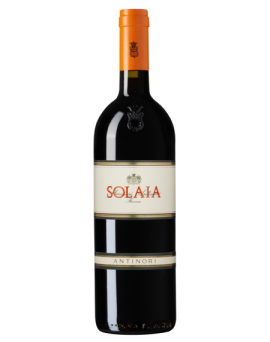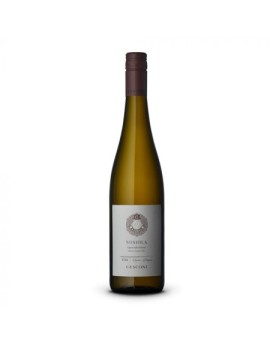Basket
0
Active filters
Il Pino di BISERNO 2019 750ml
IL PINO DI BISERNO<br />2019<br />TOSCANA IGT ROSSO<br /><br />It is the purest and most direct expression of Bibbona's unique terroir. The particular taste of the grape makes Pino di Biserno a classic with an intriguing aroma,<br />distinguished by its excellent balance and timeless elegance. It shares an identity with its alter-ego, the Biserno.<br /><br />INDICATIVE PERCENTAGE: Cabernet Franc 32%, Merlot 40%, Cabernet Sauvignon 18%, Petit Verdot 10%.<br /><br />SOIL TYPE: Partly clayey, partly Bolgheri conglomerate.<br /><br />GROWTH: The planting system is spurred cordon with a density of 6,500 vines/ha.<br /><br />CLIMATE CONDITIONS: A moderate vintage with more consistent rainfall in the spring months which made the temperatures a little cooler than average. Then the hot<br />weather arrived in early June bringing with it flowering, albeit with a slight delay. The summer saw average temperatures with a good difference in temperature between day<br />and night. It is to be considered a good vintage.<br /><br />HARVEST: The harvest began the first week of September 2019 with the picking of Syrah and Merlot and ended with the picking of Cabernet Franc, Cabernet Sauvignon and<br />Petit Verdot the last week of September and the first week of October 2019.<br /><br />VINIFICATION: The grapes were carefully selected on the vibrating belt in the winery. Destemming and soft crushing; alcoholic fermentation in truncated conical steel tanks<br />for 3-4 weeks at 28°, malolactic fermentation in barriques for 25% of the mass, the remainder in steel.<br /><br />AGING: The wine matures partly for 12 months in new and second-passage French oak barriques, the remaining 10% of the volume remains in steel. Refinement in the<br />bottle lasts at least 6 months.<br /><br />DETAILS:<br />FIRST VINTAGE: 2004<br />WINEMAKER: HELENA LINDBERG<br />CONSULTANT: MICHEL ROLLAND<br />TASTING NOTES: Intense ruby red colour. On the nose dark fruits such as plums and blackberries, hints of freshly ground roasted coffee, notes of cloves and undergrowth.<br />On the palate it is tasty, calibrated in the dense and elegant tannic texture, long finish.<br /><br />ALCOHOL: 14.5%.<br />TOTAL ACIDITY: 5.9 G/L<br />PH: 3.66<br />
Price
€60.80
Cabernet Riserva...
ALGHERO CABERNET RISERVA DOC<br />MARCHESE DI VILLAMARINA<br /><br />Grapes: Cabernet Sauvignon 100%.<br />Origin: Alghero<br />Average age of vines: 11 years<br />Vinification: Pre-fermentation maceration at 10°C for 24 hours;<br />fermentation at controlled temperature 18 months<br />Ageing: 50% in new French barriques, 50% in second passage barriques; followed by 12 months of refinement in the bottle<br />Malolactic fermentation: Yes<br />Alcohol content: 13.5 %.<br />Total acidity: 5.7 g/l<br /><br />One of the great Italian reds, a reference point among pure Cabernet Sauvignons and the pride of the Sella & Mosca project. It comes from Cabernet Sauvignon grapes<br />grown on strong soils of ferrous clay, combined by an ancient geological chaos with sand of aeolian nature. A terroir that influences and shapes the variety in a<br />Mediterranean key, making the wine unique and seductive. After harvesting, the grapes ferment with long maceration on the skins, then the wine is placed to mature in<br />barriques for about 18 months. After bottling, it rests in the cellar for a further 12 months. A decisive ruby colour with violet streaks, it is enveloped by ample perfumes of<br />great intensity, defined by notes of morello cherry and blackcurrant, tobacco and spices. The sip, rhythmic and silky, has specific weight and structure that the good acidity<br />maintains in formidable balance. The finish is warm and seductive, with a very long persistence.<br />
Price
€41.20
Sauvignon Flora 2019...
Growing region<br />The best grapes of this variety come from the growing areas of Girlan, Montiggl and Eppan Berg at 500 m above sea level. The different combinations of the growing soils -<br />clay, lime and gravel - give the wine a unique character.<br /><br />Vinification and ageing<br />The grapes are harvested by hand and delivered in small containers. After a short maceration and gentle whole bunch pressing, the must is clarified from the lees by natural<br />sedimentation. Fermentation takes place at controlled temperature in stainless steel tanks. The wine is matured for 8 months<br />in stainless steel tanks and large wooden barrels without biological acid degradation on the fine lees.<br /><br />Wine portrait<br />The Sauvignon variety has been cultivated in South Tyrol for more than a century. for more than a century. The intense aroma of citrus and elder blossom as well as the<br />freshness and liveliness in the mouth are typical for this wine. The minerality and the fresh acidity characterise the aromas. It goes well with fish dishes, seafood, asparagus<br />and white meat.<br />Growing region Girlan, Montiggl, Eppan Berg<br />Grape variety Sauvignon<br />Serving temperature (°C) 10-12<br />Yield (hl/ha) 46<br />Alcohol (vol%) 14,5<br />Total acidity (g/l) 6,55<br />Residual sugar (g/l) 0,1<br />Shelf life (years) 8<br />* Depending on the vintage, the analytical values may vary slightly.<br />
Price
€24.60
Cuvée Ris. Flora 2018...
Classification<br /><br />South Tyrol DOC<br />Growing region<br /><br />For this wine we select the best Chardonnay, Pinot Blanc and Sauvignon grapes, which grow in Girlan in the Überetsch region at an altitude of between 450 and 500m above<br />sea level. All vines are at least 15 years old and are raised using the Guyot system. The soil in this growing area is particularly rich in minerals formed by sediments from<br />the glacial period.<br />Vinification and ageing<br /><br />The grapes are harvested by hand and delivered in small containers. After subsequent whole bunch pressing, the must is clarified from the lees by natural sedimentation.<br />Fermentation takes place separately for each variety in French oak barrels of 12 and 15 hl. In the case of Chardonnay, the fermentation is followed by malolactic<br />fermentation. The subsequent maturation on the fine lees lasts 10 months. Afterwards the wine is cuvèetiert, bottled and stores as Riserva for further 9 months on the bottle.<br />Wine portrait<br /><br />This wine expresses intense, clean and fresh aromas with personality. The structure is excellent and the finish on the palate is particularly spicy and mineral.<br /><br />Growing region: Girlan<br />Grape variety: Chardonnay, Pinot Bianco, Sauvignon<br />Serving temperature (°C): 12-14°.<br />Yield (hl/ha): 46<br />Alcohol (vol%): 14,0<br />Total acidity (g/l): 6,33<br />Residual sugar (g/l): 0,6<br />Shelf life (years): 10<br />
Price
€24.60
Masseto 2016 IGT Ornellaia...
2016<br />As is often the case in recent years, the winter of 2016 was characterised by unusually warm weather with heavy rainfall in February. Budding arrived on time in the last<br />week of March. The abundance of water in the soil and the warm weather in April favoured rapid and normal vegetative growth of the vines. In May, temperatures returned to<br />normal, slowing growth slightly and leading to flowering in the last week of May in dry, sunny weather, perfect for good fruit set. Summer temperatures were normal with very<br />little rain causing considerable water stress towards the end of the ripening phase. The usual mid-August storms were also absent, prolonging the water stress throughout<br />the early part of the harvest. Fortunately, the remarkably cool temperatures during the night allowed the vines to recover from the heat of the day. Maturation proceeded<br />smoothly with excellent phenolic potential and a balanced sugar/acid ratio. The harvest began on 24 August with the youngest vines. In September, the few rainfalls provided<br />the soil with sufficient water to complete the harvest in practically perfect conditions. The older vines of the 'Masseto centrale' benefited from this situation, continuing their<br />ripening until the third week of September. The last plots were harvested on 20 September.<br />TASTING NOTES: 2016 was a textbook year for Masseto, with a typically Tuscan coastal climate that saw a dry and sunny growing season, with plenty of sunshine and<br />just the right amount of rain for perfect ripeness. The 2016 has a particularly intense young colour, and on the nose the intense aroma of ripe dark fruit blends with subtle<br />notes of cocoa and spices. On the palate, the rich, dense structure of ripe, silky tannins is balanced by a sensual, vibrant fruit note and lively acidity that keeps the long<br />finish clean and full-bodied.<br />
Price
€1,480.00
Riesling 2015 SAN LEONARDO...
Comments | With its classic varietal structure, fine acidity, and pronounced minerality, this Riesling offers true elegance and appealing, multi-layered complexity.Grape<br />varieties | 100% RieslingFermentation | 12 hours of low-temperature maceration on the skins, followed by gentle pressing and fermentation for 20/25 days.Maturation | 12<br />months sur lie in new and once-used large French oak casks Cellarability | 10 years and more.<br />
Price
€34.40
Pino Bianco Schulthauser...
South Tyrolean Pinot Blanc<br />Schulthauser 2020<br /><br />Pinot Blanc, South Tyrol's most important grape variety, has awoken from its slumber and has become the region's flagship wine. Schulthauser is the classic among South<br />Tyrolean Pinot Blancs; it was first vinified and bottled in 1982. It is not a loud drop, but a consummate, finely fruity-fresh Pinot Blanc, which at the same time seduces with<br />creamy softness and racy acidity to enjoy.<br /><br />Grape variety: Pinot Blanc<br />Vine age: 10 to 40 years<br />Growing region: Site: Vineyards in 'Schulthaus' above Schloss Moos in Eppan/<br />Berg (540-620m)<br />Exposure: Southeast<br />Soils: Calcareous gravel soils with loam<br />Method of cultivation: Guyot<br />Harvest: Mid to late September, harvest and grape selection by hand.<br />Vinification: The majority (85%) is fermented in steel tanks, the rest in wooden barrels followed by<br />followed by biological acid reduction. In February the two<br />wines are blended.<br />Yield: 60 hl/ha<br /><br />Analytical data:<br />Alcohol content: 13.5<br />Acidity: 5,7 gr/lt<br />Drinking temperature: 8-10°.<br /><br />Recommendation: Exclusive aperitif and summer wine, but also a versatile food companion: it tastes good with seafood and fish, as well as with delicate dishes of wild fowl.<br />It is particularly recommended with South Tyrolean Schlutzkrapfen.<br /><br />Ageing/potential: 4 to 5 years<br /><br />Awards:<br />2019: 93 points Luca Maroni, 92 points James Suckling, 91 points Robert<br />Parker, 91 points Falstaff, 90 points I Vini di Veronelli, 90 points Intravino.<br />2018: 94 points Wine Enthusiast, 91 points James Suckling, 91 points<br />Decanter<br />2015: 89 points Wine Spectator<br />2012: 90 points Wine Spectator; 90 points Wine Enthusiast<br />
Price
€8.50
Terre di San Leonardo 2018...
Comment: Terre, a classic Bordeaux blend, follows in the footsteps of its 'big brother' San Leonardo, born of the same terroire, expressing great freshness and balance.<br />Grape varieties: 50% Cabernet Sauvignon, 40% Merlot, 10% Carmenère.<br />Vinification: Spontaneous fermentation in small cement vats for about 15/18 days with several daily pump-overs and délestage.<br />Maturation: 80% in cement vats and 20% in French oak barriques.<br />Ageing time: 5 years and more.<br />
Price
€15.00
Moratel CESCONI Biologico...
Moratel is a blend of four red grapes that we grow in two very distinct areas, both in terms of soil and climate. Lagrein is located in Pressano, while Teroldego, Merlot and<br />Cabernet grow in the vineyards in Valle dei Laghi.<br /><br />PRODUCTION AREA<br />The Lagrein vineyard is cultivated with a pergola system with a western exposure. It is the same vineyard that produces the grapes for our Pletter reserve, but in this case<br />the<br />However, in this case the vines are younger, with an average age of about 20 years. The climate is continental and the soil is composed of a sedimentary rock type<br />consisting of limestone and compact sandstone known as the Werfen strata. The Valle dei Laghi, on the other hand, has a Mediterranean climate and from here, with vines<br />trained using the guyot system, we harvest Teroldego,<br />Merlot and Cabernet. The soils are of morainic origin and in the case of Merlot, which grows in the Pivier vineyard, there is a substantial amount of clay and silt.<br /><br />WINEMAKING<br />The hand-picked grapes are destemmed and the grapes, left whole, ferment in stainless steel tanks. Maceration lasts about 10 days for Lagrein and Teroldego and about<br />20 days for Merlot and Cabernet. Once fermentation is complete, the wine is aged in barriques for about 12 months and only then is the cuvée between the different wines<br />made. In order to<br />In order to safeguard the freshness and fruity characteristics of the wine, the barrels used are exclusively used. After bottling, Moratel is left to mature for at least six<br />months in the bottle before release.<br /><br />VINEYARDS OF THE DOLOMITES IGT<br /><br />Grapes: Lagrein, Teroldego, Merlot, Cabernet<br />Vineyards: Pressano and Valle dei Laghi<br />Soil: In Pressano, soils consisting of limestone and compacted<br />in Pressano; in Valle dei Laghi of morainic origin.<br />Vinification: fermentation in stainless steel tanks and ageing in used barriques<br />
Price
€16.20
Solaia 2018 IGT Toscana...
Solaia Toscana IGT 2018<br /><br />Climate: The 2018 season in Chianti Classico opened with a rather regular winter in terms of both temperatures and rainfall; despite these climatic conditions, the vineyards<br />began their budding activity a week earlier than the historical average for the area. The spring period, and in particular May, was characterised by frequent rainfall and slightly<br />lower than usual temperatures, while June and July were dry and fairly warm, without ever experiencing extreme conditions. A few rainfalls in August and a dry and windy<br />period in September and October allowed the grapes to ripen in an ideal manner, guaranteeing a good sugar content and excellent polyphenolic ripening. The harvest began<br />in the last days of September with the Cabernet Franc, continued with the Sangiovese and concluded with the Cabernet Sauvignon on 10 October.<br /><br />Total annual rainfall: 845.9 mm<br /><br />Average temperature 1 April - 12 October: 20.4 °C<br /><br />Rainfall 1 April - 12 October: 286 mm<br /><br />Vinification: Great care was taken, both in the vineyard during harvest and in the cellar, where the grapes were destemmed and the berries, carefully selected at the sorting<br />table, were transferred after pressing by gravity into the tanks. It is essential that only the perfect grapes reach the 60 hl truncated cone vinification tanks. During<br />fermentation and maceration, great care was taken to maintain the correct balance between the fruit and the quality of the tannins in order to express to the full the<br />sweetness, fragrance, identity and character of Solaia. Immediately after racking, malolactic fermentation began in barriques, enhancing the complexity and pleasantness of<br />the wine. The ageing process took place in new French oak barrels for about 18 months. After an initial period in separate lots, these were blended to complete the<br />maturation in wood.<br />Historical data<br /><br />Solaia is a vineyard of about 20 hectares (12 acres) facing southwest between 350 and 400 meters (1,500 and 1,300 feet) above sea level on a rocky limestone soil with<br />alberese and galestro rocks, located at Tenuta Tignanello. The Antinori family produced this wine for the first time with the 1978 vintage; the initial blend was 80% Cabernet<br />Sauvignon and 20% Cabernet Franc, which was repeated in 1979. In subsequent vintages, 20% Sangiovese was introduced, and some corrections were made to the ratio of<br />Cabernet Sauvignon to Cabernet Franc, leading to the current composition. Solaia is produced only in exceptional vintages and was not made in 1980, 1981, 1983, 1984 and<br />1992.<br /><br />Tasting notes: Solaia 2018 has an intense ruby red colour. On the nose the intense notes of ripe dark fruit, in particular blueberry and blackcurrant, combine with pleasant<br />hints of dried flowers and lavender, accompanied by delicate spicy sensations of white pepper and balsamic hints of mint and eucalyptus. Sweet and well-integrated aromas<br />of white chocolate, candyfloss and dried fruit complete the rich bouquet. On the palate it is enveloping and creamy: the tannins, soft and silky, give a long, persistent and<br />very elegant finish, with an aftertaste reminiscent of liquorice and recalling the floral and spicy notes perceived on the nose.<br />
Price
€451.40
Nosiola CESCONI 750ml IGT
Nosiola is the only autochthonous white variety in Trentino, present since the time of the Council of Trent. The origin of the name has not yet been clarified. Many maintain<br />that it derives its name from hazelnut, due to the colour of the grapes when ripe, while others believe that it is the aroma of the wines that recalls that of wild hazelnuts.<br />What we do know is that it is a versatile variety, which like few others in the world can produce both great sweet wines and still white wines with a savoury character that<br />can age for many decades.<br /><br />Once widespread throughout the province, Nosiola was mainly grown on the Pressano hill and in the Valle dei Laghi. In recent times, the variety has undergone a major<br />downsizing in favour of international varieties to the extent that it has become almost 'rare'. Today it covers a cultivated area of only 65 hectares. As winegrowers, attached<br />to our territory and our traditions, we are happy to contribute to its preservation.<br /><br />Type of wine: White wine<br />Format: (Litres) 0.75<br />Production area: Nosiola is planted in the highest vineyards on the edge of the forest at an altitude of about 500 metres to the north-east of Pressano. Nosiola flowers early<br />and prefers high, well-ventilated and sunny areas. The vineyard is west-facing and has loose soil on a deep, fertile dolomite dejection cone. The vines have an average age of<br />35 years and are trained to the simple pergola system, with a density of about 3500 plants per hectare.<br />Vinification Part of the grapes are destemmed and macerated for 4-5 days until the 'cap rises'. At this point a cuvèe is made from the directly pressed grapes and<br />fermentation continues partly in stainless steel containers and partly in large acacia barrels. The acacia wood allows us to combine the advantages of vinification in wood<br />with the preservation of the fine and delicate bouquet of Nosiola. The wine remains in contact with its own yeast for about 9 months before being bottled at the end of the<br />summer.<br />
Price
€17.00

